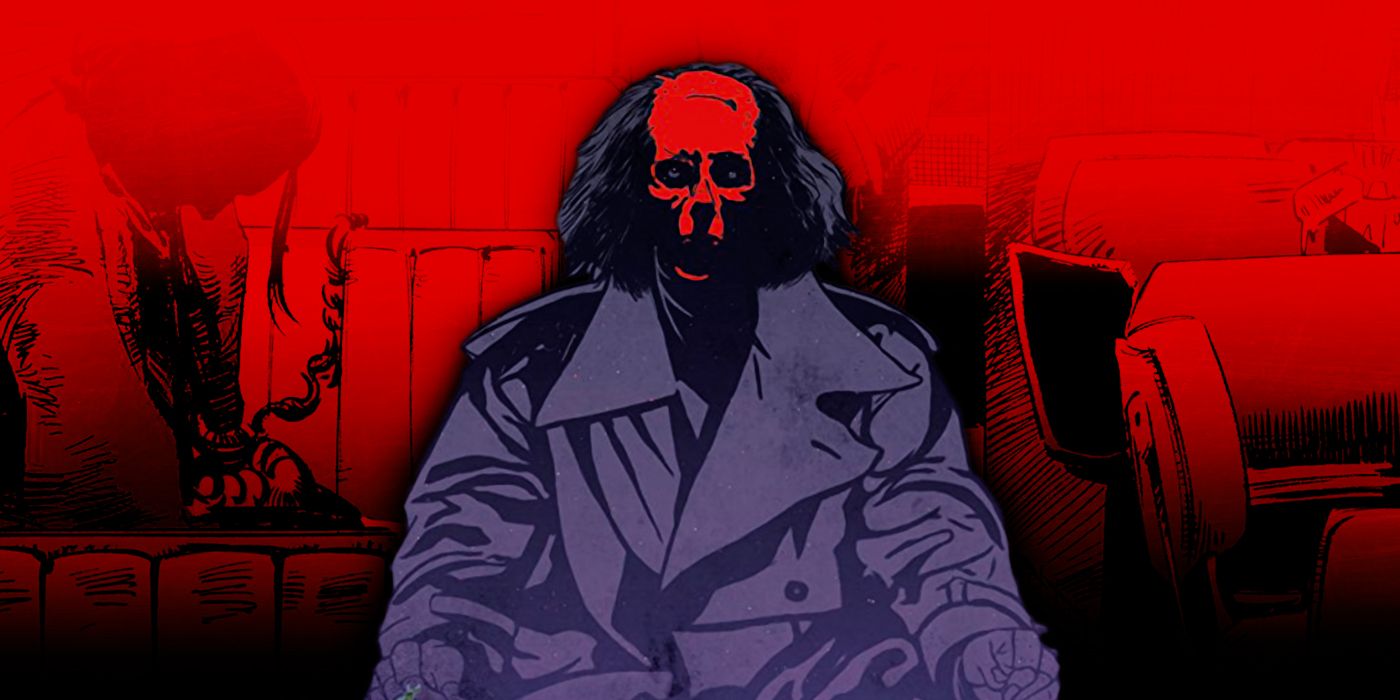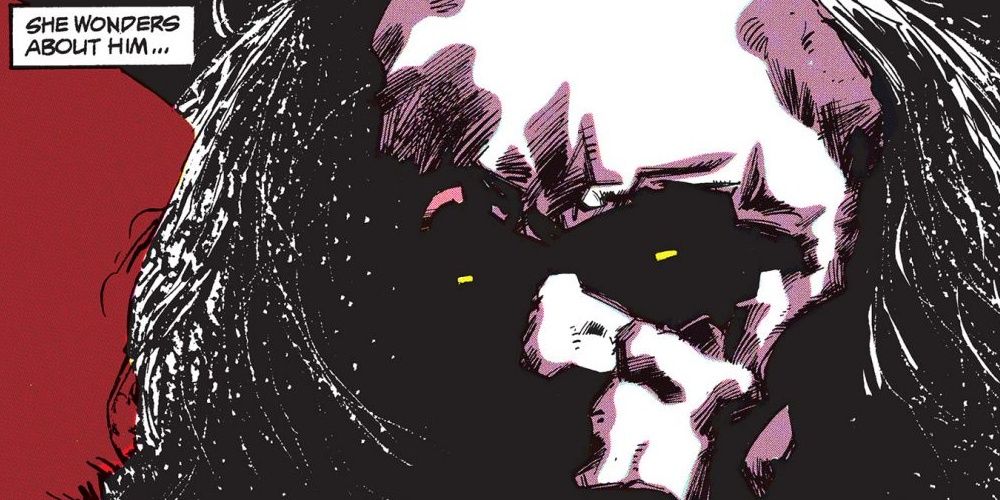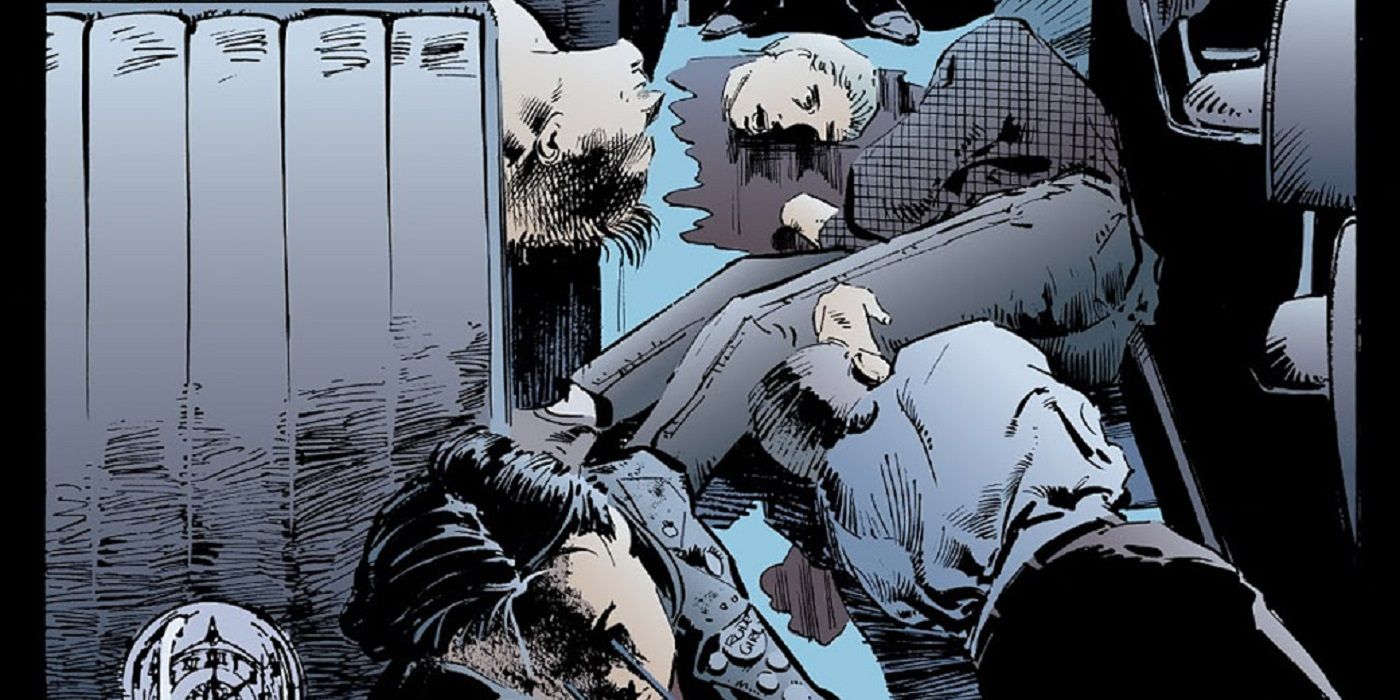Summary
- The Sandman #6, '24 Hours,' can accurately be called the perfect horror story.
- Neil Gaiman's early issues of The Sandman draw inspiration from Alan Moore's Swamp Thing, but still establish its own unique atmosphere.
- '24 Hours' delves into the dark depths of human nature, showing that the real monsters are the ones living within ourselves.
This article is part of CBR's 31 Days of Halloween Event. Read the rest here!
The Sandman took up the baton of Alan Moore's Swamp Thing to become DC's biggest horror comic of the 1990s. Since then, the series has become a comic book institution, with writer Neil Gaiman becoming a literary superstar. The Sandman would eventually have a little bit of everything sprinkled throughout its original 76 issue run - 75 regular issues and one special - but in the early days of the book, the horror was right up front, especially in the first story arc, which has been collected as Preludes And Nocturnes.
There are glimmers of the more philosophical comic The Sandman will become, but there's also some chilling horror. The best example of this is The Sandman #6 (by Gaiman, Mike Dringenberg, Malcolm Jones III, Robbie Busch, and Todd Klein). "24 Hours" takes place in a diner, with Doctor Dee using Dream's ruby to have a little fun with the customers and staff. It's an example of a perfect horror story, one that stays with readers long after they put the comic down.
The Aim of Sandman #6
The Sandman: Preludes And Nocturnes is a classic. Neil Gaiman's first story in the series wears its influences on its sleeve. Gaiman hadn't exactly found his own voice yet, and reading those early issues of The Sandman feels like reading Moore's Swamp Thing in the way the book uses captions and atmosphere. For many fans, the standout issue of the first is issue four, where Dream goes to Hell to get his helm back. One reason for this (or at least the one Gaiman believed and talked about in The Sandman Companion) was that the issue was the closest to a superhero story in those first issues. Even Moore's Swamp Thing - a titan of horror that has become legendary - is still at its heart a superhero story. It uses superheroing to bring horror and Moore's social commentary to the fore, but it's impossible to deny that it definitely belongs in the genre.
Gaiman knew that he was going to be using the Justice League villain Doctor Destiny (named Doctor Dee in the story), but he also didn't want to write a story in which superheroes were the focus. Gaiman also wanted to experiment with the way comics told stories, and that's where the idea for "24 Hours" came from. Gaiman's original idea for the issue was doing an hour on each page - there's twenty-four hours in a day, and at that time there were twenty-four pages of story in a comic. It seemed like a match made in Heaven, but the problem was that there was no way to get to know the characters doing it that way, which was important in order to make the book's horror truly hit readers. Realizing this, Gaiman tweaked the script and made something truly horrific.
The Gritty Realism of The Sandman
The Sandman's horror stories worked so well because Gaiman was an expert in constructing them. The issue gives away its ending on page four, as Bette - the waitress who secretly writes stories - thinks about the diner's patrons. In her stories, she always gives everyone a happy ending, because she knows when to end a story. Bette realizes that if you stay with them long enough, they all end in death. This is foreshadowing for the issue, obviously, but it's also for the entire series. Those first few pages, that first hour in the diner, introduce the cast of the characters and set the scene ominously for what's to come.
A key component of why this issue is a masterpiece is the artwork. Mike Dringenberg started the book as inker, embellishing Sam Kieth's pencils, and "24 Hours" is the first issue he pencils, working with Malcolm Jones III as inker. This a rather large stylistic change. Keith's pencils hadn't reached the stylization that would become his hallmark later in his career, but they gave the first five issues of The Sandman its own visual language. Dringenberg's style was different, much simpler in many ways, but that doesn't make it any less. There's a grittiness, a realism to his pencils that gives "24 Hours" something it wouldn't have had otherwise.
The way that Jones III uses the inks throughout the issue is a masterclass in how to use inking to add to a work. Dee's face is often obscured in black, a subtle nod to the soul of the man. Jones III never overpowers the pencils, but knows exactly where to strategically darken the scene, or a face. Inking is just as much an art as anything else, and Jones III shows a mastery in this issue that is uncanny. Robbie Busch's colors are the final piece in the puzzle. The issue's colors start out exactly how one would expect - bright and differentiated, very much a naturalistic way of coloring the scene. However, as time goes on and things start to become horrific, Busch deploys color washes over entire scenes, or changes skin tones and the color of clothing. It gives the violence a surreality that is cut short when he goes back to coloring the panels traditionally. DC has recolored the issue in later prints, but the original colors are so much better. These panels are when readers realize that the things they've seen aren't a dream, and that these people are really being tormented.
Dringenberg, Jones III, and Busch make a brilliant team throughout this issue. Dringenberg knows when to make the images more fanciful and when to make them savage, Jones III is about enhancing those images with just the right balance of darkness, and Busch understands how to use the colors to make the images pop. Horror doesn't have to be a visual medium, but when it is, the visuals need to be top-notch. That's as true in comics as it is anywhere else, and this artistic team takes readers on a stylistic journey through a world of atrocity.
How To Describe A Nightmare
Comics are a visual medium, so while the imagery is what many people notice at first, it's really only the beginning. "24 Hours" isn't just some beautifully rendered gore fest; in fact there's not really much gore at all. What makes the whole story so horrific is the way Gaiman puts the readers into the scene. "24 Hours" sets up the story in the beginning with Bette giving the readers her thoughts on the individual diners. Over the course of the issue, Gaiman reveals more about them, revealing their hidden truths. In this way, readers first connect with the fanciful versions that Bette creates before getting a glimpse into who they really are.
As terrible as the events of the issue are, Gaiman also shows the small horrors that lurk in every person. The way lust inflames and greed intoxicates, the pain of having destroyed something that is beloved, and the secret lives that everyone keeps inside are all on display in this issue. Gaiman gives readers the big bloody moments and the small moments that wreck people's internal lives on a day to day basis. Dee forces his victims to live out their worst selves, all to see what makes people tick. He torments them physically and mentally, simply because he can.
Gaiman's work on The Sandman can best be described as both sacred and mundane. He weaves the lives of mortals with the archetypes of the Endless, as well as other powerful deities and spirits. This issue is a great example of this. Doctor Dee is divine not because he deserves it, but because he stole the power. Readers will see what that power can do throughout The Sandman, but "24 Hours" reveals what happens when someone decides to use it in the worst way possible. Dream is the hero, yet the only thing that keeps him from being Doctor Dee is that he lives by rules. Dee spends the entirety of "24 Hours" showing what can happen when all the rules are taken away and someone broken is allowed to be in charge. Gaiman shows readers just how terrifying the power of Dream truly is, and it's something that they'll never forget.
Gaiman's greatest gift is the depth he gives the characters in his books. "24 Hours" continued something that started in the prior issue, which was Gaiman taking a normal person and dropping them into a world that they can never understand. Each patron of the diner in "24 Hours" is a mostly normal person who is suddenly put into a situation where all of their sins are intensified. Gaiman gives each of them just enough depth that readers understand who they are, so seeing them ripped apart, despite their sins, is even more horrific. Everyone is guilty of something, but none of them deserves the fate that awaits them.
Dee is powered by a tool of the Endless, but he's human. Judy loved Donna, but that didn't stop Judy from hitting her. Marsh used Bette and her son whenever he had a chance because that's just who he is. Garry and Kate seem perfect, but Garry is cheating on Kate and she will do anything to keep him, including kill him. Mark wants greed and corporate power. Dee doesn't personally kill any of them, not really. He just sets the scene for them, frees their inhibitions, and watches. Dee is the sacred, giving humanity the tools to do what they want, and they do terrible things to each other. And that's truly where the horror of this comic comes from. Not from Dee and his power, but that all he does is let the people be themselves. Dee strips away society and shows them what they would be without the trappings of life's expectations.
"24 Hours" isn't just a tale of an insane villain using an object of great power to kill. It's the story of someone letting the insanity play out, and allowing it to come to the fore. Dee shows his victims the darkness in their souls, and the pain behind their nightmares. He lets them play out their power fantasies and takes revenge on each other.
"24 Hours" is scary because it reminds readers that the greatest monsters are people unleashed with no morality, encouraged to do anything they want to each other. The best horror reminds people that all the demons and monsters aren't as frightening as what we do to each other. That's why "24 Hours" hits the way it does. It's a reminder of the beasts inside humanity and how thin the wall is between humans and the monsters lurking inside each and every one of us.


.jpg)




